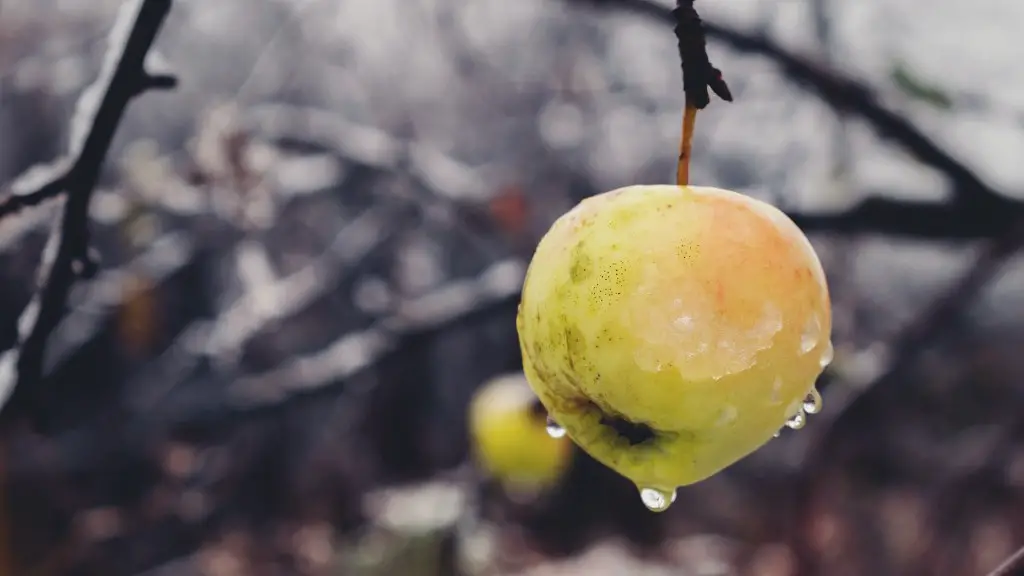Have you ever wanted to plant your own sago palm tree? Growing your own sago palm tree can be an incredibly rewarding experience that will bring much-needed shade to your home or garden. Plus, taking care of the sago palm seeds offers an opportunity to connect further with nature. In this article, you’ll learn what steps to take to give your new sago palm the best chance at success from the start.
Before you get started, you need to understand what type of tree the sago palm actually is. It is a cycad, one of the most ancient of all living plants on earth. It has survived unchanged even through the time of the dinosaurs. These trees need the right conditions to germinate and grow, and by understanding the details, you can give it the best chance that you can to thrive.
One of the main things you need to understand is the temperature range that sago palm seeds need. Sago palm trees’ seeds need a temperature range of 28°F-90°F (or -2°C -32°C). Anything colder than 28°F will be too cold for the seeds to germinate, and anything warmer than 90°F will reduce its chances of successful germination. It’s also important to know that sago palm likes to be in a moist but well-draining soil. Watering it too much or too little can be damaging to its growth potential.
Now that you have a better understanding of what type of soil and temperature conditions the sago palm needs to germinate, you can begin to collect and prepare the seeds for sowing. Sago palms produce cone-like structures on their leaves that contains the seeds. When you’re ready to collect the seeds, these cones will be light yellow. Once the cones have yellowed, you can remove them from the plant and collect the seeds on a paper towel. Make sure to dry them out before you begin planting.
When it comes to planting the seeds, you can either plant the sago palm indoors or outdoors. If you’re planting them indoors, make sure to use a potting soil with good drainage. Plant the seeds about 1/4 inch deep and lightly cover them with soil. If you’re planting them outdoors, make sure to choose a spot with plenty of shade and good drainage. Plant the seeds about 1/2 inch deep and loosely cover with soil.
The last step is to water the sago palm seeds. Give them a consistent amount of water, making sure that they don’t get too much. Also, make sure to water them regularly to keep the soil moist. Depending on the temperature and the amount of light they get, the sago palm seeds could take anywhere from a couple weeks to a couple of months to germinate.
Adding Turning and Compost
When it comes to taking care of your sago palm seeds, one of the best things you can do is to add additional turning and compost to the soil. Turning the soil helps to aerate it and prevents the soil from becoming too compacted. Compost adds plenty of vital nutrients to the soil, giving the sago palm the best chance of success.
When you’re turning and adding compost to the soil, you need to make sure that it’s done in the right way. It’s best to use a fork or shovel to turn the soil and add in the compost, rather than doing it by hand. Make sure to mix the compost in evenly and lightly, and then water it down.
When it comes to the type of compost to use, you can use any kind of organic material such as leaves, grass clippings, or animal manure. Make sure to use organic material that doesn’t contain any weeds or disease-causing organisms, as this could have a negative impact on the sago palm seed’s growth.
Adding Shade Cover
Another important step to take in order to ensure that the sago palm seeds have the best chance of thriving is to provide them with a partial shade cover. This will keep the soil cooler, which is essential for germination.
If you decide to grow your sago palm indoors, you can simply place a light cloth over the pot to provide the shade cover. If you’re growing it outdoors, you can simply use a large tree or shrub to provide the partial shade.
The shade cover helps to protect the sago palm seedling from the intense heat of the sun, which can damage or even kill the young seedling. It also protects it from wind and heavy rainfall, which can also be damaging.
Making Sure it’s Getting Enough Light
As the sago palm seed begins to germinate, it’s important to make sure that it’s getting enough light. The sago palm needs plenty of sunlight in order to grow and thrive. A minimum of 6 hours of direct sunlight is best – more is even better.
If you’re growing the sago palm indoors, make sure to place it near a window that gets good sunlight. If you’re growing it outdoors, make sure to position it in an area that gets plenty of sunlight.
If you’re not able to provide adequate sunlight, you can always supplement with artificial lighting. This is especially beneficial for sago palms that are growing indoors. However, it’s important to remember that artificial light should never be used as a substitute for natural light, as the sago palm needs both in order to thrive.
Watering Schedule
Finally, you need to create a watering schedule for your sago palm in order to ensure that it gets the right amount of moisture. Depending on the temperature and the amount of light that your sago palm is receiving, you should water it every few days to every week.
It’s important to make sure that you’re not over-watering the sago palm, as this can lead to root rot and other problems. Make sure to water the sago palm until the top inch or two of soil is moist, but not soggy.
If you’re growing the sago palm outdoors, you may want to consider using a drip irrigation system. This system allows for controlled and consistent water flow directly to the roots, giving the sago palm the right amount of water it needs.
Fertilizing
Fertilizing is another important step that will give your sago palm the best chance at success. Sago palms are heavy feeders, so it’s important to give them the right type of fertilizer. A balanced, slow-release fertilizer is best, and it should be applied every 4 to 6 weeks during the growing season.
It’s important to make sure that the fertilizer is applied at the right concentrations and at the right times. Over-fertilizing can burn the sago palm’s roots and cause other problems. The best way to ensure that you’re not over-fertilizing is to follow the directions on the fertilizer package.
Pruning
Pruning is another important step in taking care of your sago palm. Pruning helps to keep the plant healthy and can also help to shape the sago palm into a more attractive shape. When pruning the sago palm, make sure to use a clean, sharp pair of pruning shears. Make sure to prune the sago palm while it’s still young in order to encourage proper growth.
You should also make sure to remove dead or dying leaves and branches. This will help to keep the sago palm healthy and prevent it from getting sick. Once the sago palm is mature, you only need to trim off any dead or dying leaves and branches.
Protecting from Pests
Lastly, you need to make sure that your sago palm is protected from pests. Pests such as aphids, mites, and mealybugs can all wreak havoc on the sago palm and cause serious damage. If you notice any signs of pests, such as discolored or wilted leaves, make sure to take action quickly.
One of the best ways to protect the sago palm from pests is to make sure that it has the right type of soil. A well-draining, balanced soil helps to prevent root rot and other diseases that can attract pests. Additionally, you can use natural pest control treatments such as neem oil or insecticidal soap to keep the pests at bay.





